HOTEL MOAKSAN (호텔 모악산)
10.3Km 2024-08-01
104-10, Moaksan-gil, Gui-myeon, Wanju_Gun, Jeonbuk-do, Korea
+82-10-5333-3022
The Moaksan Motel is located in the tourism complex at Moaksan Mountain. Newly refurbished and re-opened, it is known as a clean, cozy hotel offering a high standard of customer satisfaction. The tourism complex comprises a large public parking lot, local food restaurants, and a football pitch among other facilities. Moaksan Mountain is a popular hiking destination among hikers and the people of Jeonju. In addition, the hotel is just three minutes’ walk from the Jeonbuk Province Art Museum, while Gui Reservoir, where the National Canoe Championships is held by the Korea Canoe Federation, is situated in front of the hotel. The hotel also offers easy access to public transportation as the bus stop (Bus No. 970) is situated in the tourism complex, allowing guests to travel directly to Jeonju Bus Terminal.
Moaksan Mountain (모악산)
10.4Km 2024-04-07
Gui-myeon, Wanju-gun, Jeonbuk-do
Moaksan Mountain is a mountain with an elevation of 793 meters, spanning across Gui-myeon in Wanju-gun, and Geumsan-myeon in Gimje-si, Jeollabuk-do. It overlooks the Honam Plain, a major agricultural region in Korea, and houses the precious Buddhist cultural heritage site, Geumsansa Temple, along with its subsidiary hermitages. To the north of the mountain lies the beautiful Gui Reservoir, and there are walking paths around the reservoir, providing a pleasant walking experience.
Oseongje Reservoir (오성제 저수지)
10.5Km 2024-10-21
Daeheung-ri, Soyang-myeon, Wanju-gun, Jeollabuk-do
Oseongje Reservoir provides a natural rest area for locals with a waterside path. Located nearby is a gallery and photo spot. The area quickly became a must-visit attraction after featuring in BTS' 2019 Summer Package.
Korea Expressway Corporation Arboretum (한국도로공사수목원)
10.7Km 2024-05-28
462-45 Beonyeong-ro, Deokjin-gu, Jeonju-si, Jeonbuk-do
+82-63-212-0652
The Korea Expressway Corporation Arboretum is located in Jeonju and operated by Korea Expressway Corporation. The arboretum was opened to counterbalance the environmental damage caused by the construction of expressways. As such, the arboretum maintains and promotes the conservation of many beautiful flora from across the country.
Wanju Songgwangsa Temple (송광사(완주))
10.9Km 2024-04-07
255-16, Songgwangsuman-ro, Wanju-gun, Jeonbuk-do
+82-63-243-8091
Songgwangsa Temple in Wanju-gun, Jeollabuk-do has a unique history that spans a period of over a thousand years. For many years the temple lay incomplete until Monk Bojo Chejing began reconstruction in the 7th year of King Gyeongmun of Silla (AD 867). The temple was destroyed at one point in time, but Master Monk Jinul prayed that it be rebuilt. In accordance with his fervent hopes, in the 1600s the monk’s followers rebuilt a number of the temple’s halls and buildings, many of which can still be seen today. The temple is also remembered as the temple that King Injo helped rebuild with the hope that his two sons, who had been taken hostage by the Qing dynasty during the Byeongjahoran War (Chinese invasion of Korea in 1636), would be returned safely and that Buddha would heal the nation.
One of the Korea’s four major temples, Songgwangsa is home to Jijangbosal and Siwangsang statues (found in Jijangjeon Hall), a Seokgayeorae statue, and 500 Nahansang statues (found in Nahanjeon Hall). The temple is also home to eight Tangible Cultural Assets and four Treasured Cultural Assets: Daeungjeon Hall, the Samsebulsang statues, the bell-tower, and the Sacheonwangsang statue.
Beloved for its historical significance as well as its beauty, the temple draws throngs of worshipers throughout the year. In spring, many tourists flock to the area to explore the temple and walk through the nearby cherry blossom tunnels. A worthwhile attraction for visitors of all ages, the temple is particularly well-suited for those with mobility problems since it is located on ground level.
Happydream (행복드림한옥)
11.1Km 2024-08-05
181-21 , Bongseoan-gil, Wanju-gun, Jeonbuk-do
+82-63-247-0050, +82-10-3677-5339
Dueok Happydream Village is located in Bongseo-gol, Wanju-gun, Jeollabuk-do - a location said to be one of the most propitious in Korea, owing to the surrounding mountains’ resemblance to the Bonghwang mythical bird. The guesthouse’s tile-roofed buildings are set in a wide grassy yard against a background of green mountains. As well as accomodation the village operates various nature and traditional culture experience programs, some of which take place at the guesthouse. The rooms are small but clean and comfy, and with the doors open offer scenic views.
Barangsan Garden (바랑산가든)
11.4Km 2024-04-07
192 Daeyul 2-gil, Geumgu-myeon, Gimje-si, Jeonbuk-do
Barangsan Garden is a maeuntang (spicy fish stew) restaurant where visitors can enjoy their meal while admiring the scenery of Daeyul Reservoir. Their flagship dish is the megi tang (spicy catfish stew) made by boiling wild catfish and dried radish in a perilla seeds broth with seasoning. Other popular menu items include jap tang (assorted spicy seafood stew) made with freshwater fish and minmul jangeo gui (grilled freshwater eel).
Bibinakan (비비낙안)
11.8Km 2024-10-15
26 Bibijeong-gil, Samnye-eup, Wanju-gun, Jeonbuk-do
Climbing the steep stairs leading to Bibinakan affords one a view of the open lawn and view of the cafe where BTS members sat comfortably. The scenery of Wanju and the leisurely flow of the Mangyeonggang River as well as downtown Jeonju can be seen in a panoramic view without obstruction. Especially when the sun goes down, the sunset over the river is spectacular scenery.
Gwisinsa Temple - Gimje (귀신사 - 김제)
12.3Km 2024-04-07
40, Cheongdo 6-gil, Gimje-si, Jeonbuk-do
+82-63-548-0917
Gwisinsa, located in Cheongdo Village, Geumsan-myeon, Gimje-si, is now a temple of the Jogye Order, but once belonged to the Haweom Order. The temple is widely believed to have been established by the great monk Uisang Daesa during the 16th year of King Munmu (676). However, some experts site the existence of the Namgeunseok stone animal sculpture as proof that the temple was originally the private temple of King Beop of the Baekje Kingdom.
Throughout history, the temple has had many names—Guksinsa, Gwisinsa, Gusunsa, and Gwisinsa (same English spelling, different meaning)—but not much is known about when the temple was called by which name. On the temple grounds are a 3-story stone pagoda and some stone sculptures including seoksu (animal statues) and budo (a stupa in honor of a great master). Inside the temple are Daejeokgwangjeon Hall (Treasure No.826), Myeongbujeon Hall, and Gongyangjib Chamber (a chamber for Buddhist offerings).
NocWoonJae (녹운재)
12.5Km 2024-12-23
472-18 , Songgwangsuman-ro, Wanju-gun, Jeonbuk-do
+82-10-4450-6565
Nokwoonjae is a guest hanok in Oseong Hanok Village, Wanju-gun, Jeollabuk-do. It comprises two houses built on sloping land - Naunchae above and Unahchae below - with a corridor connecting the two. All rooms are built of timber and red clay - beneficial to both mind and body - and have large windows to let you enjoy natural views and breezes.Toast, jam, and milk are provided for breakfast, and self-catering is possible. Sagunja painting and tea ceremony experiences are offered, while local visitor destinations include Songgwangsa Temple, Wibongsa Temple, the 60m Wibong Falls (one of Wanseon’s ‘Eight Splended Views’) and Jeonju Hanok Village.

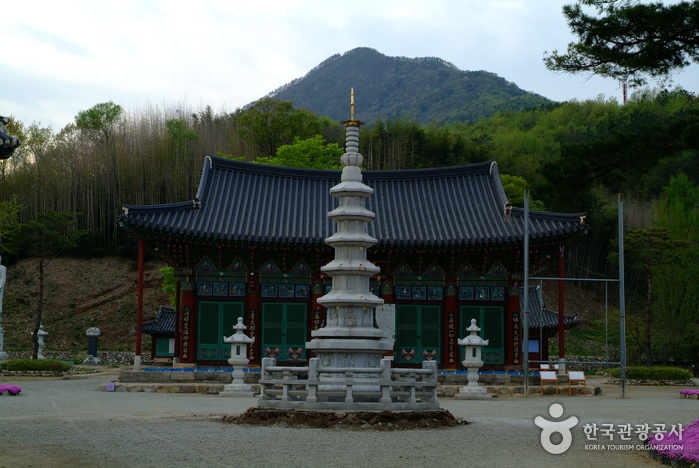
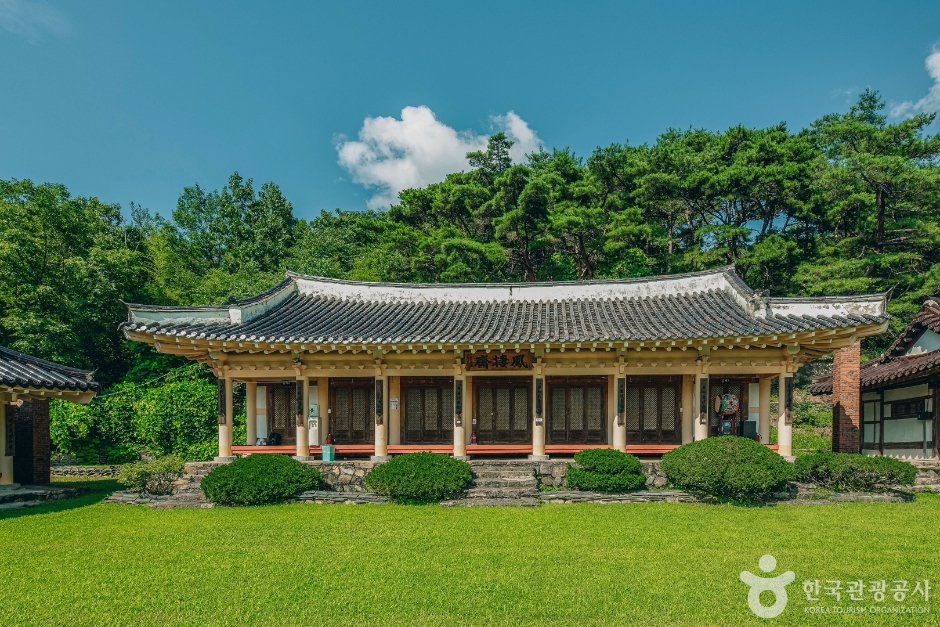
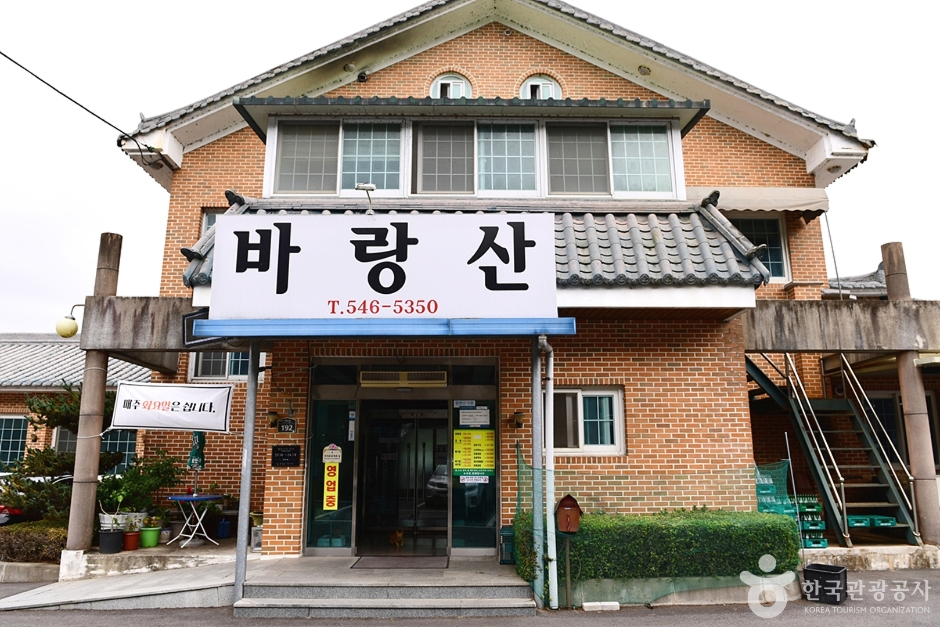
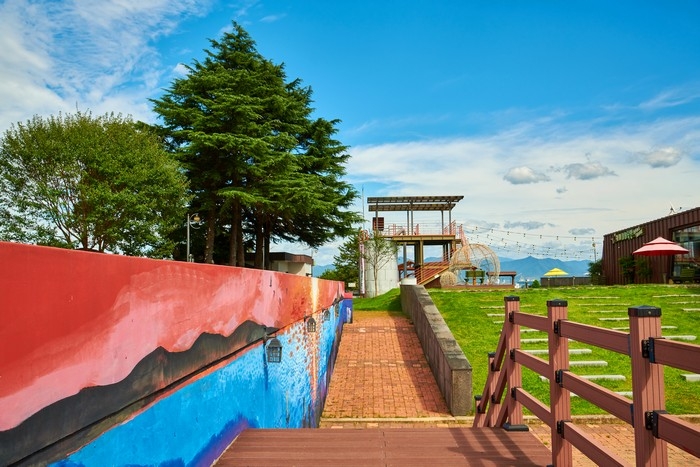
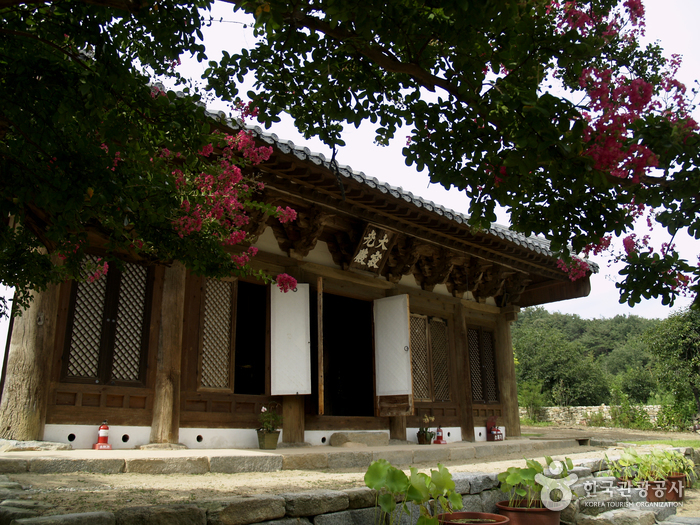
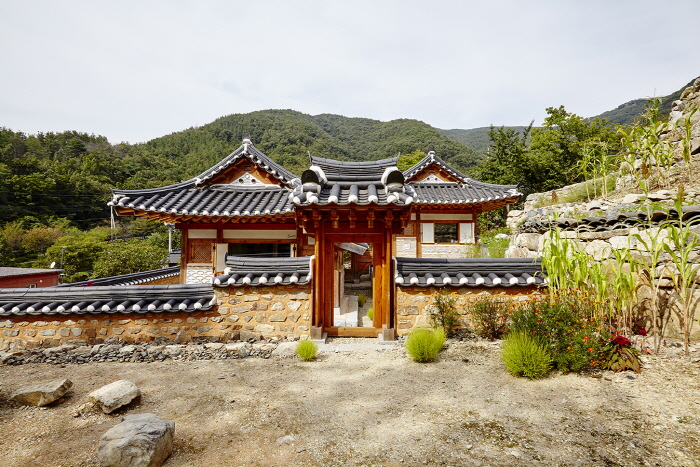
 English
English
 한국어
한국어 日本語
日本語 中文(简体)
中文(简体) Deutsch
Deutsch Français
Français Español
Español Русский
Русский